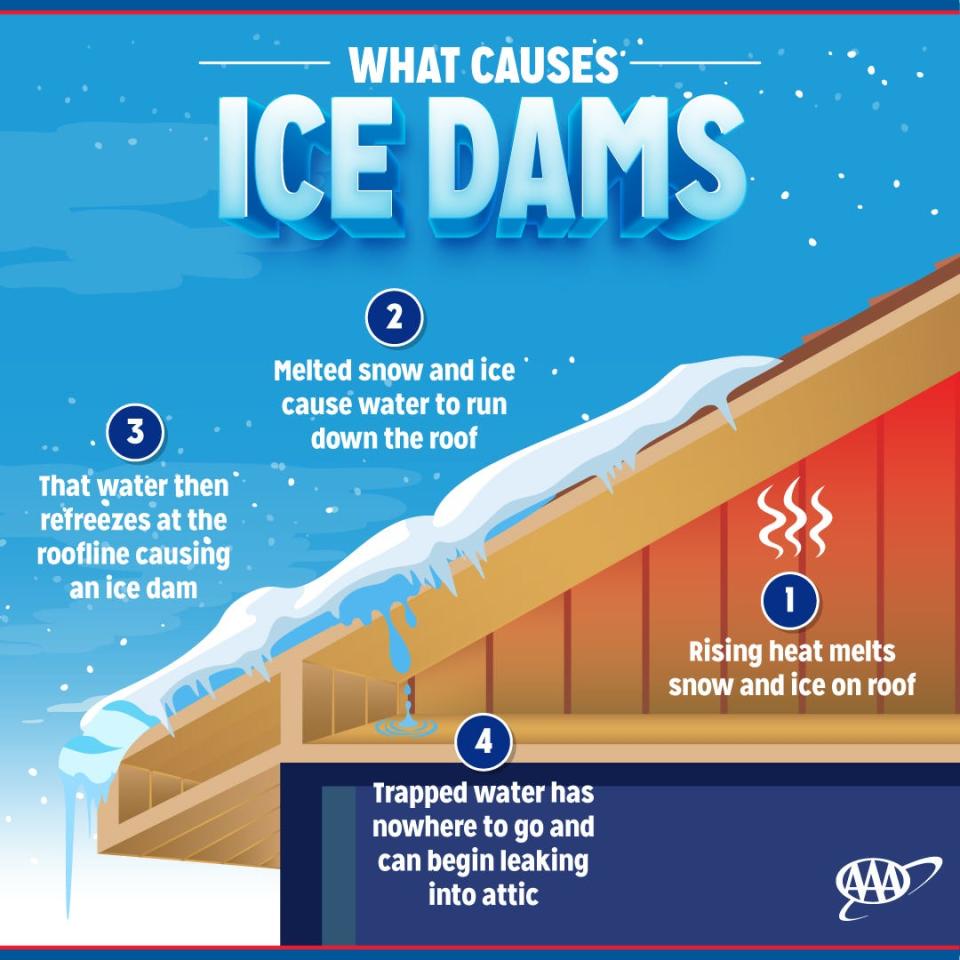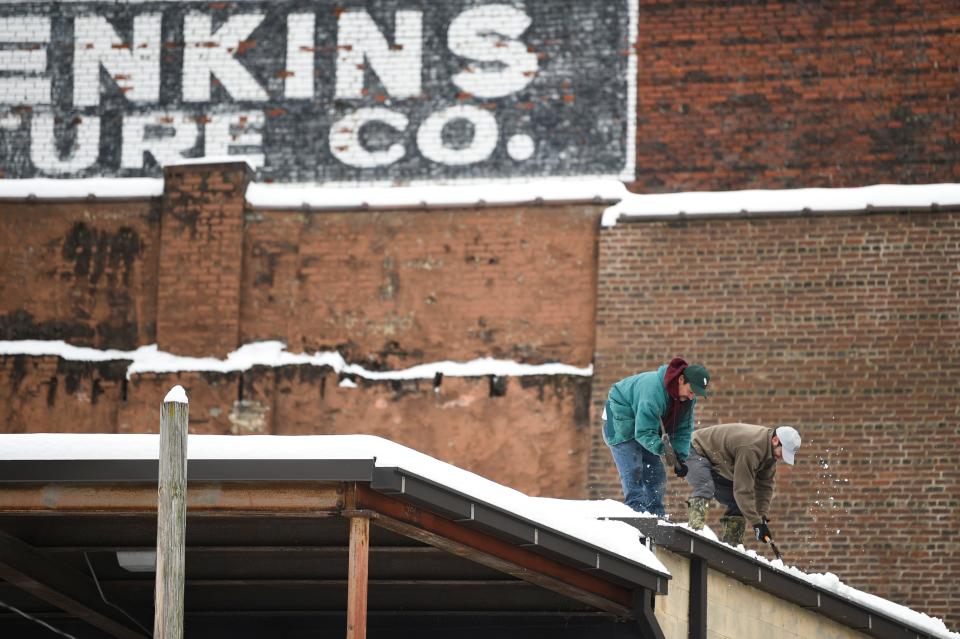Add 'ice dams' to the list of things Tennessee should worry about during winter weather
Tennesseans, already reeling under amounts of snow and ice residents here rarely see, and with new rounds of wintry weather on the horizon, now have something new to worry about: Ice dams.
The American Automobile Association has issued a warning to state residents that the big temperature swing we are seeing could cause ice dams, a ridge of ice that forms at the edge of a roof and prevents melting snow from draining off the roof.
Those ice dams, if not dealt with, can damage your roof and the inside of your home, AAA said in a press release.
“Ice dams are more common in northern parts of the U.S., but they can form anywhere there are drastic temperature shifts,” said spokesperson Megan Cooper. “It’s important to know what you’re looking for, because this can lead to costly repairs to your attic, walls, ceilings, insulation and flooring.”
How does an ice dam form and how can it damage your roof?
Ice dams form when heat inside the house enters the attic and melts snow on the roof, the release explained. The melted snow drips down your roof and re-freezes when it reaches the colder eaves (the part of the roof that overhangs the wall). This ice accumulation is called an ice dam.
As more melted snow travels down the roof, it begins to re-freeze sooner, pushing its way under the shingles. The water then finds holes in the roof decking and begins to drip into your attic.

Once the water is inside your house, it can cause warping floors and soggy insulation and could lead to mold and mildew. Additionally, ice dams may cause some damage to the roof by loosening shingles, rotting the wood or tearing off gutters.
How can you tell if an ice dam has formed on your roof?
You have icicles that form along the edge of your roof and/or gutters.
Ice has developed along the overhangs of your roof, or your gutters are filled with ice.

How can you prevent ice dams?
Increase attic ventilation to help circulate air through the attic, ensuring a consistent temperature.
Examine your insulation to make sure it’s not blocking the vents and check its depth.
Prevent heat from escaping into your attic by ensuring all attic ducts are sealed and properly insulated and any exhaust fans lead outdoors, not to the attic.
Keep the bottom couple of feet of the roof and gutters clear of snow to help minimize ice dams.
What should you do if you have an ice dam on your roof?
In an emergency situation where water is flowing into the house structure, making channels through the ice dam with warm water or a chemical de-icer allows the water behind the dam to drain off the roof. This is only a temporary solution, according to the University of Minnesota Extension.
Call a professional. While breaking off ice can seem like a simple task, if the ice is not removed properly, you risk causing more damage to your home or even injuring yourself in the process. Hire a licensed contractor with experience in ice dams to remove it properly and assess if you have any damage to your home.
Liz Kellar is a Tennessee Connect reporter. Email liz.kellar@knoxnews.com.
Support strong local journalism by subscribing at knoxnews.com/subscribe.
This article originally appeared on Knoxville News Sentinel: Why Tennessee should be concerned about 'ice damns' in winter weather

